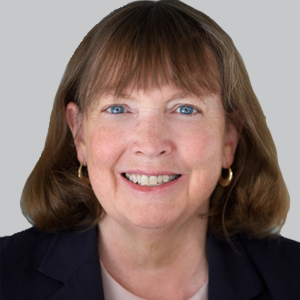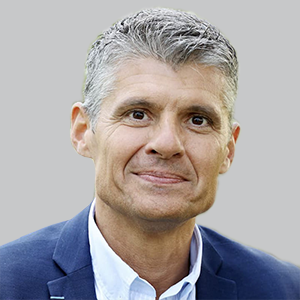Video
Unmet Needs in the Treatment of Spinal Muscular Atrophy
Author(s):
A panel of experts considers current unmet needs in SMA by emphasizing the need for further study of combination therapy, more comprehensive newborn screening, and more effective early diagnosis and treatment.
Crystal Pound, MD: With that, I’d like to talk a little bit about looking forward. I am excited and enthusiastic about the potential opportunities we have lying ahead of us to consider patient populations, unmet needs, and optimization. One area that is investigating optimization is with the consideration of adding nusinersen after onasemnogene abeparvovec treatment. The RESPOND clinical trial is evaluating the potential benefit of adding nusinersen after onasemnogene abeparvovec administration in patients who have identified symptoms by the primary investigator. I am excited about this being the start to a conversation that I hope will expand even more broadly as time moves forward. I tell my patients now that my expectation is that maybe 5—but likely 10—years from now, I am not going to prescribe them 1 thing, but likely a multitude of different interventions that may help to optimize their outcomes. What I would like to do is, we will start with Tom, I’d like to get your thoughts on where does the future lie? What are our unmet needs?
Thomas Crawford, MD: Well, I am going to throw a wet blanket on your hope for the 1 thing. We were able to establish efficacy in relatively small groups—25 kids, or babies in the CHERISH study, and in the SUNFISH study in the magnitude of 100 kids—because of the magnitude of the treatment effect was so incredible. It was like, “Oh my god, these kids are so much better.” Showing the magnitude of the benefit of the second drug on top of that is going to require a much better controlled, much larger trial. I don’t see the finances there to be able to support those kinds of trials. The trial adding nusinersen to Zolgensma [onasemnogene abeparvovec] is small, and unless the magnitude of effect is awesome, I don’t see it being very useful. Obviously, we want to try these things. The other possibility, though, is that we can add a completely different kind of therapy. There has been interest in antimyostatin therapies. Recently, there has been some very encouraging pilot data from Scholar Rock Inc on myostatin inhibition as a potential therapy. This is going to be the subject of a blinded study that will probably start at the end of this year or maybe next year.
There are other possibilities. There are other ways in which we can try to get more work out of the motor neurons left behind. I think one of the unmet needs is the understanding of the basic neuroscience, or why motor neurons are deficient. Why they are impaired in SMA [spinal muscular atrophy] is not solved. We have solved the problem at the beginning, but there are some fascinating and important questions that are going unanswered because of this common idea that SMA has been solved, and hence we do not have to have to fund research in it. That is a mistake and needs to be addressed. Part of the community needs to refocus on basic mechanisms at this point. There are other unmet needs, of course; there are all the folks out there who have been damaged by the fact that they have lost motor neurons. I am really worried that the increasing number of specialists in pulmonary medicine, in the orthopedics of deformity, in the best management of the peculiar pulmonary disorders associated with chest wall weakness but normal diaphragms—that kind of expertise was increasing over time. I’m worried it is going to decrease when we have fewer and fewer people left behind who are suffering these damages. I have a real commitment to helping the people who have damaged motor neurons in the meantime because they did not get these therapies at an earlier time. I think we owe them an allegiance to be doing our best to care for these people. This is a big unmet need and needs to be maintained.
One of the last things that I’ll mention, there is going to be an interesting diversion. I am concerned there’s going to be the “haves” and “have nots:” people who have SMA but they have therapies and hence they don’t think of themselves as having SMA, which is appropriate. Then there are those who were damaged in the meantime but are left behind. I think there might be some friction between those groups along the way. Finally, I mentioned the fact that when the disease gets rarer but there will still be 5% of the people not detected by newborn screening, that will be an issue of delayed diagnosis, to say nothing of the international efforts. There are going to be a lot of people around the world who do not get the advantage of these hyper-expensive medications, which itself is going to be one of the new challenges. Is that enough?
Crystal Proud, MD: That sounds like a lot of unmet needs that we need to address over time. Carolina, I’ll turn to you next; do you have any thoughts that you think are key takeaways for our audience?
Carolina Tesi Rocha, MD: I echo Tom and everything he has mentioned. One of my take-home points, when I sit down with families, is that none of these treatments, at least the ones approved as of today, act as a magic wand. It is extremely important to maintain regular visits with our pediatricians and the whole disciplinary treatment team to ensure that the patient continues to receive the appropriate standard of care. We should not forget that all the patients in the clinical trials were followed quite closely to make sure they were meeting all these standards. Also, we need to monitor the response to treatments; we just talked about risdiplam, and it is very new, so we will have to see and monitor the potential adverse effects now that it is commercially available.
Thomas brought up the important point that we cannot leave behind patients who were treated symptomatically later in the disease, but also, even in my small experience treating newborns through the newborn screening, those patients often have SMA. When you look with a magnifying glass, they do have SMA. They might meet the WHO [World Health Organization] milestones, but they do have SMA. We will have to better define this as we move along, and also the responders versus nonresponders if possible. I am not encouraging that yet because we need more information about combination treatments. Lastly, given the high costs of these medications and the impact, identifying whether they might not benefit—this is very hard because we put on the line the hearts of the scientists versus the hearts of the doctors taking care of the patients we’ve known for such a long time. It is very hard to say, “I do not see how these treatments are going to help you. We have been treating you for now 10 years, and we haven’t seen much.” I don’t know; I think we must keep looking at and defining these new and evolving phenotypes.
Crystal Proud, MD: Excellent points. Claudia, what thoughts do you have for us on key takeaways or messages for our audience?
Claudia Chiriboga, MD, MPH: Well, I agree with everything that has been said. I think that clinical trials are key to determine if combination benefit is helpful. We should stop doing a lot of what we are doing now, just giving more because we can. It should be that there is a benefit. There is a societal cost for treating without any evidence that it is helpful. The hope is that, with newborn screening and early treatment, we can avoid a lot of this. We then have to focus on the durability of our patients’ responses over time. I’m hoping that nusinersen trials with higher doses may show the benefit of that because our patients do seem to get a little worse as they get older and do not have the musculoskeletal reserve preserved in that sense. I think research and extended follow-up of existing agents is needed; we need more data.
Thomas Crawford, MD: One last thing I was going to add is qualifying the biomarker. We have neurofilament as an option, although it is not quite yet ready for prime time. Qualifying it is probably the only way we are going to be able to show the marginal differences in these therapies.
Crystal Proud, MD: Basil, do you have any thoughts you want to share, looking ahead for SMA?
Basil Darras, MD: Well, since we are talking to pediatricians and community neurologists, it would be important to emphasize one more time the importance of early treatment. Time is motor neurons, and even a week can make a difference, for example if the baby has 2 copies of SMN2. It is important to try to refer these patients to centers as soon as possible. We must have the neurologists try to make the diagnosis. For community neurologists, again, they must be careful not to be sending gene panels…in a case like this. If you suspect SMA, you go directly to the SMN1 gene testing and try to make the diagnosis as soon as possible. As Tom said, hopefully we will have luck with the myostatin inhibition studies.
We may be able to add something that is not focused just on restoring SMN protein, probably combination therapy. Some of these combination trials may suffer because you may not see any efficacy or any advantage because the child has already lost a lot of motor neurons, and there is no therapy that is going to be effective, that is going to offer an additive advantage. The last thing I have to say is that all the treatments are very expensive. There are countries around the world who may not be able to afford these treatments. The best way to deal with SMA is, despite some of the ethical issues, to apply widespread, large population-based preconception carrier screening. We can try to prevent SMA by screening prospective parents and try to diminish the incidence of disease as we have with…disease and other genetic conditions.
Crystal Proud, MD: Those were some great final words for us. Thank you so much for participating. Thank you for watching this NeurologyLive® Peer Exchange. If you enjoyed the content, please subscribe to our e-newsletters to receive upcoming Peer Exchanges and other great content right in your inbox.
Transcript Edited for Clarity
Newsletter
Keep your finger on the pulse of neurology—subscribe to NeurologyLive for expert interviews, new data, and breakthrough treatment updates.




